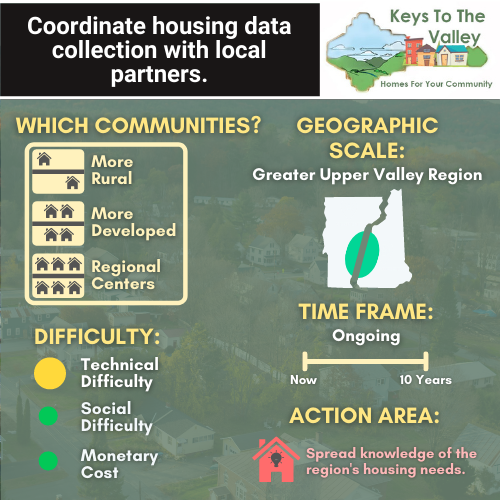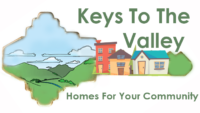Coordination with local partners is essential for the successful tracking of housing data. Much of the data of interest is collected at some point by municipalities and housing providers; however, the type and detail is not consistent across the greater Upper Valley region due to differences in policy and process, and is not recorded in any accessible way. Data collection teams must work closely with municipal and housing provider staff to collect consistent data and communicate results responsibly. Partners should make the effort to adjust policy and process, or consider new strategies, in order to allow for reliable tracking of these evaluation measures.
Efforts must build on and improve active data collection programs, such as the Vital Communities New Homes initiative. Since 2019, New Homes has provided yearly updates on new units going back to 2010. The dataset covers a subset of communities in the greater Upper Valley region and includes details on the assessed value, size, and locations of units resulting from both new construction and conversions.
For datasets on emergency and homes with supportive services, data collection teams must work closely with providers to build on existing tracking programs, then add or adjust methods where appropriate. On physical accessibility, very few municipalities track whether or not homes contain features to improve accessibility for disabled or aging residents. When considering this dataset, it will be important to think creatively and collaboratively about how this goal might be reached.
This tool should be used in concert with others part of this strategy to Improve Tracking of Housing Data.


